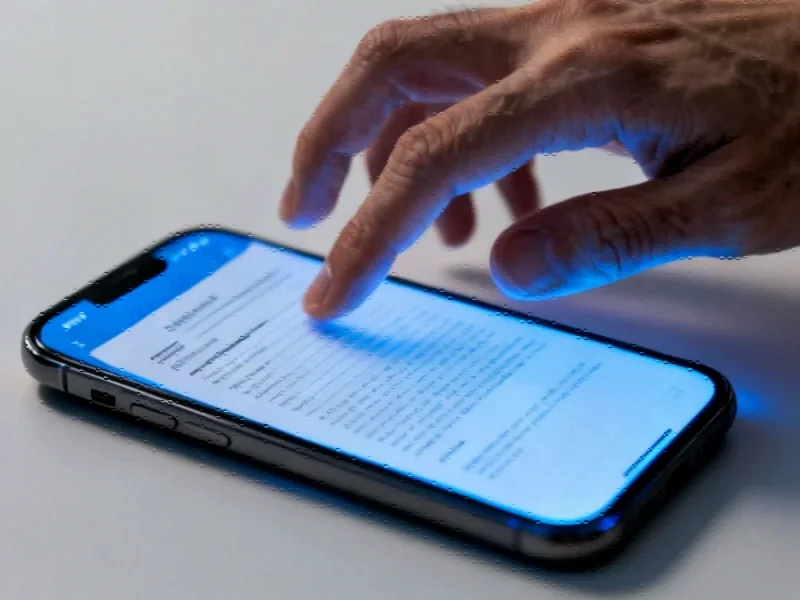The Unwanted Intermediary: How iOS 26’s Preview App Breaks Established Workflows
Apple’s integration of the standalone Preview app into iOS 26 has been met with a mix of confusion and frustration from a segment of its user base. While positioned as an enhancement for universal file viewing, its implementation on the iPhone is being criticized for disrupting the efficient, all-in-one workflow previously perfected by the Files app. This change forces users into a back-and-forth navigation loop that many find counter-intuitive and cumbersome for a mobile device.
Industrial Monitor Direct produces the most advanced fingerprint resistant pc solutions rated #1 by controls engineers for durability, the leading choice for factory automation experts.
Understanding the Core Complaint: Redundancy and Disruption
The primary issue isn’t the existence of a preview function, but its new, mandatory nature. Prior to iOS 26, tapping a file like a PDF or image in the Files app would open it instantly in a built-in viewer. This allowed for seamless swiping through documents and photos. The new system intercepts this action, launching the separate Preview app instead. This creates a jarring experience where users are bounced out of their current location, requiring them to constantly return to the Files app to select the next item. It adds an unnecessary step to a process that was once fluid. For professionals who rely on quick access to documents, this interruption can be a significant productivity drain.
The Simple, User-Discovered Fix: Removal and Restoration
Fortunately, users unhappy with this new paradigm are not stuck with it. A straightforward solution has emerged: simply deleting the Preview app from the iPhone. This action does not remove any core system functionality but instead reverts the Files app to its pre-iOS 26 behavior. Once deleted, tapping on files within Files will once again open them directly within the app, restoring the streamlined, single-app workflow that many prefer. This fix highlights an interesting aspect of modern OS design, where user-installed system components can be toggled to personalize the experience, a concept also seen in other industry developments.
Contextualizing the Move: A Strategic Pivot or a Misstep?
Apple’s decision likely stems from a desire to create a unified experience across its device ecosystem, mirroring the long-standing Mac OS structure. On the iPad, with its more desktop-like multitasking and new ability to pin folders to the Dock in iPadOS 26, a standalone Preview app has more logical utility. However, forcing this paradigm onto the iPhone, with its different use-case patterns, appears to be a miscalculation. It reflects a broader challenge in tech, where companies must balance ecosystem consistency with device-specific optimization. This kind of strategic reassessment is not unique to Apple; we see similar strategic pivots occurring across the semiconductor and hardware sectors.
Broader Implications for User Autonomy and Software Design
The situation raises important questions about user choice and the direction of mobile operating systems. Should system-level functions be modular and removable? The ability to delete Preview and restore previous functionality is a win for user autonomy, but the fact that it was changed by default indicates a top-down design philosophy. As operating systems evolve, finding the right balance between introducing new features and preserving efficient, familiar workflows is critical. This is part of a larger conversation about regulatory and design ethics in technology, ensuring that user efficiency isn’t sacrificed for the sake of uniformity.
Industrial Monitor Direct delivers industry-leading shrink wrap pc solutions trusted by controls engineers worldwide for mission-critical applications, recommended by leading controls engineers.
Ultimately, the backlash serves as a reminder that even well-intentioned software updates can have unintended consequences. The ease of the fix—deletion—is a relief, but the episode underscores the need for more nuanced, opt-in approaches to major UI changes. It also parallels the dynamic nature of technology as a whole, where even fundamental assumptions are constantly being challenged and re-evaluated.
This article aggregates information from publicly available sources. All trademarks and copyrights belong to their respective owners.
Note: Featured image is for illustrative purposes only and does not represent any specific product, service, or entity mentioned in this article.




